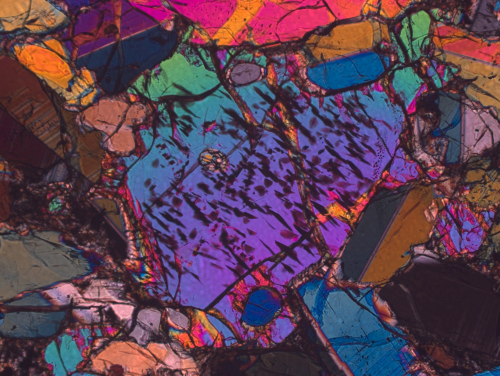New research reveals extraordinary lifespan of Martian volcano
Published: 3 October 2017
Analysis of Martian meteorites has uncovered 90 million years’ worth of new information about one of the red planet’s volcanoes

Analysis of Martian meteorites has uncovered 90 million years’ worth of new information about one of the red planet’s volcanoes.
Geologists based in the UK and the USA have used advanced mass spectrometry techniques to learn more about the origins of six meteorites known as ‘nakhlites’ – pieces of Martian terrain which were blasted from the face of the red planet by an impact event 11 million years ago, then drifted through space before landing on Earth.
Their findings, which show that the Martian volcano erupted at least four times over the course of 90 million years, are published in a new paper in the journal Nature Communications.
Mars is home to the solar system’s largest volcanoes, including Olympus Mons, which is over 21 kilometres high, and over 600 kilometres across. Their imposing size is partially due to Mars’ lack of tectonic plates. Unlike Earth, where shifting plates will eventually cut off volcanoes access to their supply of molten rock, Martian volcanoes stay in the same place, and can grow in size with each eruption as new layers of lava settle and cool on the volcanic flanks.
The team’s new research uses radioisotopic dating techniques, common for determining the age and eruption rate of terrestrial volcanoes, to do the same thing for one Martian volcano. This is the first detailed analysis of growth rates in Martian volcanoes using Martian meteorites, and highlights significant differences in volcanic activity between the Earth and Mars.
The research was conducted by scientists at the Scottish Universities Environmental Research Centre, the Universities of Glasgow and St Andrews, the Lawrence Livermore National Laboratory, and the Natural History Museum in London.
Dr Benjamin Cohen, of the Scottish Universities Environmental Research Centre and the University of Glasgow’s School of Geographical and Earth Sciences, is the paper’s lead author.
Dr Cohen said: “We know from previous studies that the nakhlite meteorites are volcanic rocks, and the development of age-dating techniques in recent years made the nakhlites perfect candidates to help us learn more about volcanoes on Mars.”
The researchers used a technique known as argon-argon geochronology to learn more about the age of the Martian volcanic samples. Using a noble gas mass spectrometer, they could measure the amount of argon built-up from natural radioactive decay of potassium, allowing them to determine how much time has passed since the volcano erupted.
Dr Cohen added: “We found that the nakhlites formed from at least four eruptions over the course of 90 million years. This is a very long time for a volcano, and much longer than the duration of terrestrial volcanoes, which are typically only active for a few million years.
“And this is only scratching the surface of the volcano, as only a very small amount of rock would have been ejected by the impact crater – so the volcano must have been active for much longer.”
“This study has been able to provide a clearer picture into the history of the nakhlite meteorites, and in turn the largest volcanoes in the solar system.”
The paper, titled ‘Taking the pulse of Mars via dating of a plume-fed volcano’, is published in Nature Communications. The research was funded by the Science and Technology Facilities Council (STFC) and the NASA Mars Fundamental Research programme.
First published: 3 October 2017
<< News

